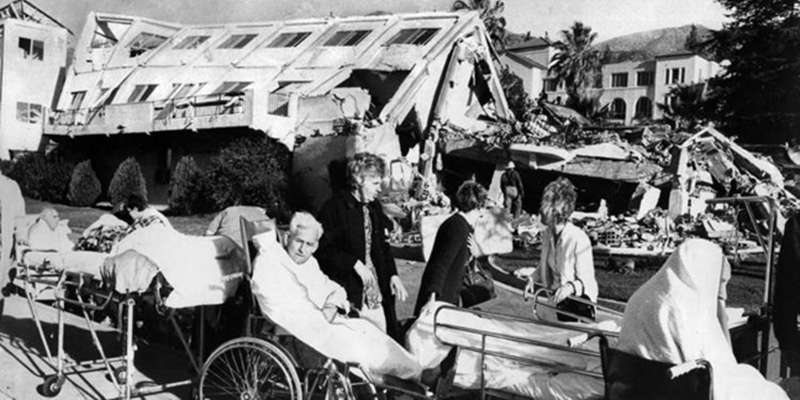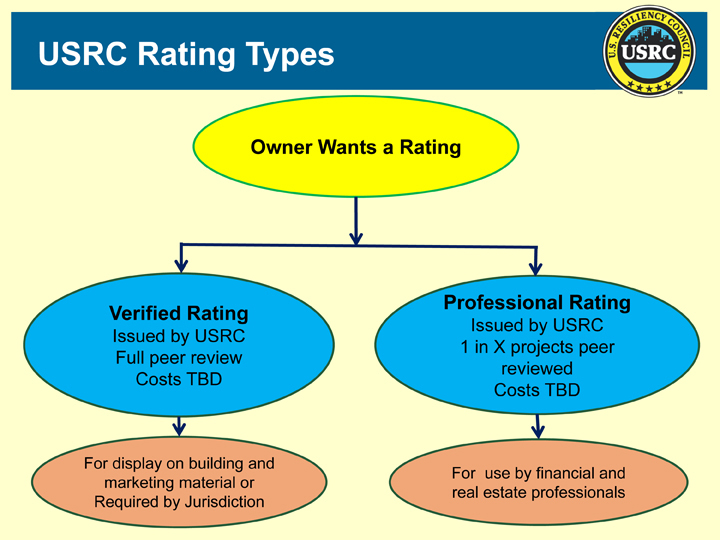
 |
| L.A. mayor's earthquake plan represents "biggest step forward." |
| ICC is among founding members of resiliency council that is developing building rating system. |
 |
| San Fernando Veterans Administration Hospital patients wait for evacuation to other facilities after a magnitude 6.6 earthquake hit near Sylmar, Calif., on Feb. 9, 1971. Two hospitals and two major freeway interchanges were destroyed during the disaster. Photo: Los Angeles Times |
| Moving forward with just a few of the projects outlined in an earthquake action plan unveiled in December by Los Angeles Mayor Eric Garcetti would be "the biggest step forward" in the city's efforts to fortify its buildings and infrastructure against damage from seismic disasters, according to U.S. Geological Survey seismologist Dr. Lucy Jones, the mayor's point person on earthquakes. At a recent L.A. Chamber of Commerce event, Jones talked about proposals for protecting the city's buildings and their occupants in the event of a major earthquake, as well as the water system and telecommunications infrastructure. "Even if we only get to part of this, it's the biggest step forward that we've ever seen," Jones said. "This earthquake is absolutely inevitable. Let's get ready for it." Garcetti's plan, considered the most ambitious seismic safety regulations in California history, calls for mandatory earthquake retrofitting for thousands of buildings in the city. The recommendations target two of the riskiest types of buildings built before 1980: concrete buildings (specifically non-ductile concrete buildings) and wood frame structures built atop weak first floors, such as those on top of carports and garages and supported by slender columns. These wood frame structures, often referred to as soft story buildings, would be retrofitted within five years and the concrete buildings within 30. Some of the plan's proposals already are being considered by the Los Angeles City Council. "The building safety and fire prevention industry should applaud these proactive efforts to further protect Los Angeles citizens during seismic events," said International Code Council Chief Executive Officer Dominic Sims, CBO. "The plan will help building owners and users know more about their buildings and provide incentives to build safer and more resilient communities. "In addition to the Code Council's support of these historic efforts, the ICC Evaluation Service also can expedite the evaluation process for building product materials to help respond to the need for evaluating and certifying innovative seismic resistant products," Sims continued. "Our recently implemented Connect+ Customer Care Service also helps facilitate the link between a customer and ICC-ES through a dedicated service team, providing answers to all application questions and improving customer satisfaction." The mayor's "Resilience by Design" plan includes a voluntary seismic safety rating system that would enhance building performance beyond building code requirements. Building codes ensure a low probability of collapse, and the ratings system would encourage building owners to make sure their structures not only remain standing, but remain functional. The rating system is being designed by the newly-formed U.S. Resiliency Council (USRC). ICC is a founding member of the USRC and is working with associations such as the Structural Engineers Association of Southern California (SEAOSC) to develop the system that focuses on safety, repair cost and recovery. |
||||||||||||||||||
|
||||||||||||||||||
| USRC is developing recommended credentials for qualified rating engineers. Qualifications of technical reviewers will include overall experience and appropriate expertise with specific building types. USRC also is developing recommendations for a technical review and appeal process for those performing building evaluations. | ||||||||||||||||||
 |
||||||||||||||||||
| Potential stakeholders in the rating system include: |
||||||||||||||||||
|
||||||||||||||||||
| Possible applications of the rating system include: |
||||||||||||||||||
|
||||||||||||||||||
| The "Resilience by Design" plan recommends improving Internet and cellphone networks in Los Angeles by working with telecommunications companies. Garcettie also proposed creating a solar-powered, city-wide wireless Internet network and fortifying cellphone towers. Funding details for the projects have not been outlined. Garcetti said it will be expensive, but that doing nothing to improve Los Angeles' ability to recover from a devastating quake will be more costly. "The time for retrofit is now," he said at the plan's unveiling. "Complacency risks lives. One thing we can't afford to do is wait." |
Share this story:



|